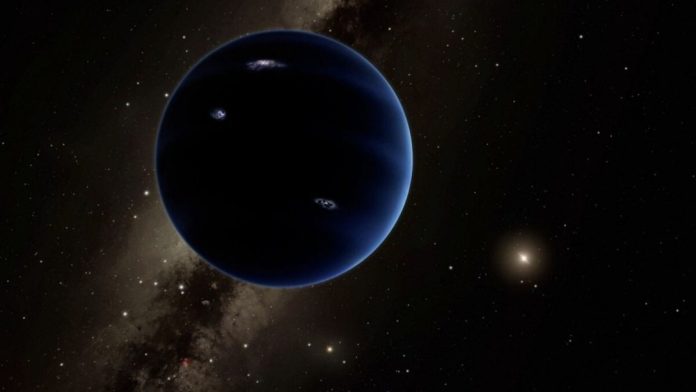Earlier, it was believed that the solar system has nine planets until Pluto has lost the planet's status in 2006. However, astronomers are increasingly talking about the existence of a real ninth planet that can be hidden far beyond the orbit of Neptune.
A group of researchers from Taiwan University found that the Neptune object may be approximately 75–105 billion kilometers from the Sun. This conclusion is based on the analysis of infrared observations, made with a difference in two decades - in 1983 and 2006. Scientists have noticed a weak glow, which has shifted in the sky during this time, which can indicate a slow movement of the great celestial body. The orbital period of such a planet can reach 10-20 thousand years. The Kuiper belt is an area of Neptune's orbit filled with icy objects that sometimes move in unusual directions. This suggests that there is an invisible force that affects their trajectory - it is likely that it will be a mysterious ninth planet.
It is estimated that it can weigh 7–17 times more than Earth and belong to the category of icy giants similar to uranium or Neptune, not rocky planets like Mars or Earth. Due to the distance from the sun, the temperature on this planet reaches about −187 ° C. It is expected that it has a thick atmosphere of gases and ice, which almost does not reflect sunlight. This complicates its search. Infrared telescopes are used to identify such dull objects. In 1983, the IRAS satellite made an inspection of the sky, and in 2006 it was supplemented by the Japanese satellite Akari. Comparison of their data has revealed a potential candidate who, according to assumptions, is moving rather than a background light source. Further observations are now needed to confirm the orbit of this object and find out if it is a planet. Scientists plan to re -explore this area of the sky to track the movement of the signal and find out its nature. If the existence of the ninth planet is confirmed, it will be a breakthrough in astronomy and will make the idea of the structure and history of the solar system.
This open question will also affect the search for exoplanets - planets around other stars. If our system hides the giant so far, then such objects can be widespread in other star systems, and we simply have not noticed them before.


